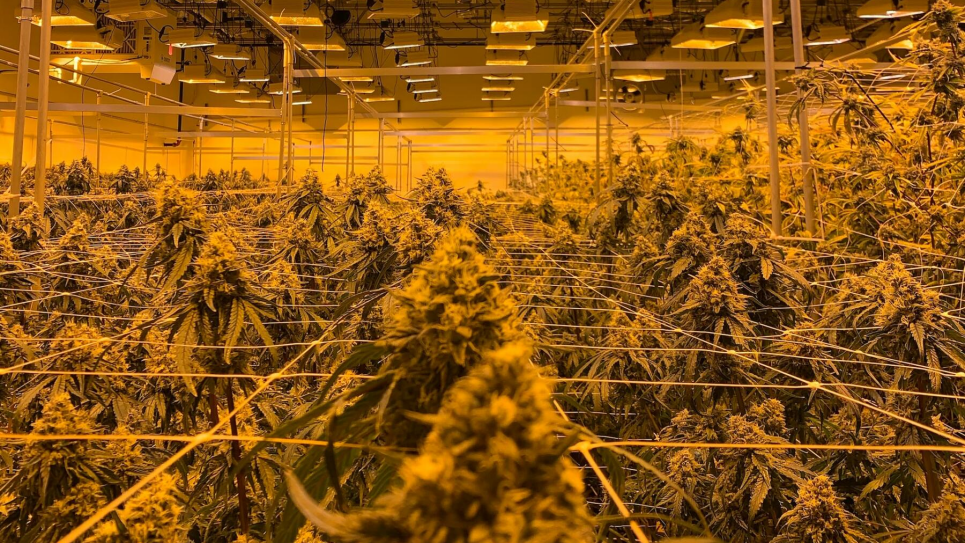HUBburger® Group Services
Log in
| admins |
| StreetTadeusza Tylewskiego 44 |
| 80-169Gdansk |
| Poland |
HUBburger® Group Services
Be eco! Grow hemp
How long does it take to get a crop from growing indoors?
Advertising

pic. pexels.com
1. Indoor cultivation- The life cycle of cannabis - "Good weed comes to those who wait patiently." How long does it take to get a crop from growing indoors?
The average time for most cannabis plants is about. 4 months. The process depends on many factors that affect the crop.
At the very beginning it is difficult to determine when the plant will reach full maturity. However, we have a general schedule that allows us to monitor and control each stage of marijuana development. Every new grower should familiarize themselves with it in order to be in full control of the crop. It also helps to fully understand the plant and establish a kind of "bond". It is important to remember that for cultivation you need: knowledge, skills, but also heart and vocation. Every plant is a living organism. When we treat them too primitively and objectively, we have no chance for a good and abundant harvest.
Growing cannabis indoors, that is, under lights, requires at least a basic knowledge of the subject. Today we will discuss the life cycle of hemp in detail, which is the absolute basis for understanding this plant before we move on to growing it.
Average life cycle of hemp:
There are four distinct phases of the plant's life cycle:
- germination: 1-14 days
- seedling: 2-3 weeks
- vegetation: 2-8 weeks
- flowering: 8-10 weeks
You can bypass the germination and seedling phases if you use "clones" instead of seeds. However, at this point we assume that we are starting our hemp crop with a batch of healthy, feminized seeds*.
We also take into account that the selected seeds are sensitive to photoperiod**.. This means that their flowering cycle depends on the amount of light the plant is exposed to. Let's move on to discuss each phase of the cycle.
1 Germination Phase:
You can plant seeds directly into the soil, but the vast majority of growers prefer to let the seeds germinate first. This provides the plant with additional strength for good "rooting "in the soil. This process also eliminates weaker seeds.
The easiest way to speed up germination is to lay the seeds on a slightly damp paper towel. Be sure to keep the seeds out of the light during this time, and provide them with an optimal temperature between 21-26 degrees Celsius. Too high a temperature can cause the seeds to rot, while too low a temperature can translate into a big slowdown in germination or lack thereof. At this stage, it is important to control and maintain constant humidity.
Be sure to "handle" the seeds gently and be careful not to contaminate them with your fingers. The use of tweezers is recommended to avoid unintentional cross-contamination.
The first "white sprouts" should be visible within a week. In some cases, this process may take more than a week, but you should not wait more than 14 days.
This stage requires daily monitoring of the seeds, for signs of development.
2. Seedling stage:
The seed that has germinated is ready for further growth, but it is extremely fragile and delicate. At this stage, use soft lighting such as a dim LED or CFL bulb for 16 hours a day.
Use water with a PH of 7 when spraying seedlings. Too acidic or too alkaline a reaction is not suitable for watering plants.
In the first stage, the seedlings will have small, rounded leaves, called cotyledons. As the plant grows, true cannabis "fans" will begin to appear, which are essential for the photosynthetic process.
A clear and visible signal that the plant is moving from the seedling stage to the vegetative stage are the leaves. When will we see ok. 4 sets of 5- 6 fan leaves, this means that our plant is strong enough to transplant into a larger pot. Usually the seedlings are ready to be transplanted into the main pot after about. 2- 3 weeks.
3. Vegetation phase:
The vegetative phase involves rapid growth of the plant. The main stem is strongly elongating, and the space between the nodes is increasing. Indica varieties are usually not very tall and tend to grow horizontally (sprawling). Sativa varieties, on the other hand, grow more upward and are less branched. To help plants at this stage, feed them additionally with Nitrogen. It is an extremely important element at every stage of growth, but it is of the greatest importance just in the vegetative phase. It is among the elements of great biological importance, but it should be remembered that too high a dose for plants is lethal.
Vegetative phase is very important in cannabis life cycle. Plants at this time need to be provided with optimal environmental conditions to produce a good and abundant crop. Make sure to provide adequate light, water and nutrients. Cannabis is a photoperiodic plant which means that it will start to bloom when you restrict its access to light.
During the vegetative phase, various training techniques such as bending or topping can be used to increase the overall yield of the plant.
The vegetative period prepares the right conditions for the flowering phase. The healthier the plants are at this time, the better prepared they are to produce an abundant and healthy crop.
To keep plants in the vegetative stage, lighting should be on 18/6 mode. Most strains are generally ready to move to the flowering stage in 4 to 8 weeks. However, it all depends on how strong the flowers are, what variety it is and what kind of yield you want.
4. flowering phase:
To go from vegetation to flowering, change the lighting schedule from 18/6 to 12/12. Shortening daylight hours mimics the natural change of seasons from summer to fall and causes major changes in the plant's hormones.
In the first week of the flowering phase, the plants pull out (preparing to maintain large buds), white hairs appear, the aroma is increasingly noticeable.
In the second week, the sex of the plant can be determined. Female individuals develop long, white pistils at the nodes. Thus, in the natural environment, they prepare for pollination, which would result in the eventual production of seeds. Males, on the other hand, develop round pollen sacs. A hermaphrodite can also happen, such an individual will have both characteristics, which means that pollen can interfere with bud production.
In the third week, plants stop pulling out and focus mainly on bud development.
The length of the flowering phase largely depends on the average growth time of the variety in question. The only way to know when to pick flowers is to monitor their size and hair color. For most strains, flowering takes approx.. eight weeks, but can take as long as an additional two or three weeks for sativa varieties.
When a plant begins to bloom, its nutrient requirements change. At this stage you need to increase the concentrations of Phosphorus and Potassium. In what proportions you apply Nitrogen, Phosphorus, Potassium is really up to you. Admittedly, nutrient manufacturers provide precise guidelines for applying dosages, but you need to observe your plants and react on the fly. You need to be careful that the conditioner is not too strong, so as not to burn the plants.
You should also be very vigilant for the presence of mold. Ensure adequate humidity and airflow. The humidity level should be maintained at 40%-50%, while fans will provide the required air circulation. During the flowering stage, lower the temperature. Every plant is different and each grower will adjust the temperature according to their guidelines. It is recommended that the temperature in grow rooms during the day be between 22 and 26 degrees Celsius, and at night between 16 and 18 degrees Celsius.
In the third and fourth week, the plants have significantly larger buds and a more intense aroma. With each passing day, the plants will have larger, plump calyxes, more and more white pistils, and a visible layer of trichomes.*** The aroma will be more noticeable, depending on the variety.
Harvest time:
There is no specifically set time when to start "harvesting". You should rely on your intuition and, with the help of observation, determine when to harvest the flowering buds.
You can use a high-quality magnifying glass or a jeweler's loupe to look closely at the trichomes. Most growers believe that the best time to harvest the flowers is when the trichomes have a milky white, opaque color.
Crystal clear, transparent and immature trichomes indicate low THC concentration. On the other hand, the intense orange color of the hairs means that the flower contains an oxidized form of THC- CBN. This cannabinoid has a strongly sedative effect. It causes a strongly "couch potato" and intoxicating effect, which is very often not desirable.
Do you want to have a herb of good acumen?- you need patience!
Growing good quality flowers takes time, attention and dedication. Some people, wanting to shorten the waiting period for the harvest, opt for feminized autoflowering seeds, the so-called "autoflowering seeds".. "automats "****. These varieties tend to produce a lower yield and lower cannabinoid content. You can focus on Indica varieties to reduce your waiting time. This cannabis genus usually reaches flowering several weeks earlier than Sativa varieties. No matter what type of cannabis you choose, remember that in order to start your "hemp adventure" with growering, you should prepare very well for it. Your preparation in all respects: knowledge, equipment, facilities, time will allow you to reap a bountiful harvest and bring great joy and satisfaction.
That's why in the next part of the series, Grower Wiesiek will suggest where to start and how to prepare well to begin the "hemp adventure" of growing.
* Feminized seeds are genetically modified to grow only female plants.. These advances have made the cultivation of cannabis much easier and the process itself more economical.
** Photoperiod is the phenomenon of the dependence of plant and animal development on the length of periods of darkness and light (night and day) in the diurnal cycle.
***Trichome thin and long outgrowth of epidermis, unicellular or multicellular. Cannabis trichomes are resin glands. It is in them that cannabinoids, flavonoids and terpenes are found.
****Automatics Autoflowering varieties otherwise known as automatics from English. Autoflowering are strains that bloom automatically regardless of the light cycle. In other words, they bloom on their own after a fairly short vegetation period of about 2-4 weeks.
Sources:
- McNellis, TW and Deng, XW (1995). Light control of seedling morphogenetic pattern. Plant cell.
- Saloner A, Bernstein N. Response of medical marijuana (Cannabis sativa L.) to nitrogen supply in a long photoperiod. Front plant science.
- Moher, M., Jones, M. and Zheng, Y. (2021). Photoperiodic Response of In Vitro Cannabis sativa Plants.
- Pan, G., Li, Z., Yin, M. et al. Whole-genome identification, expression and sequence analysis of the CONSTANS-like gene family in cannabis reveals a potential role in regulating plant flowering time.
- Thomas, FJ and Kayser, O. (2019). Minor Cannabinoids of Cannabis sativa L. Journal of Medical Science.
- Royalgueenseed.co.uk
If you think this is an interesting article, it will be my pleasure if you share it with others.
Greetings
| Monika Sobczak |
| Monika Sobczak |
| Street |
- Share
tags
Recent
Health
Meditation and working with one's own mind is an ancient practice that has thousands of years of roots in many cultures and traditions.
Business
HUBburger.com CEO Maciej Sagal in an interview with The Birb Nest channel
The festival season can be seen around the corner, but at this event, in addition to the excitement of performances by Polish hip-hop stars - you will also be able to enjoy activities in a special hemp zone HUBburger.com
top3
Health
Author
| Justyna Moraczewska |
| Justyna Moraczewska |
| Street |
Date of publication 2023-02-10
Ecology
Author
| Monika Sobczak |
| Monika Sobczak |
| Street |
Date of publication 2023-02-10
Health
Author
| Monika Sobczak |
| Monika Sobczak |
| Street |
Date of publication 2023-02-15
Eco-friendly detergents, soaps and powders are a green alternative
Health
Author
| admins |
| Hanna Wolska |
| StreetTadeusza Tylewskiego 44 |
| 80-169Gdansk |
| Poland |
Date of publication 2023-01-10
New research leaves no doubt
Future
Author
| admins |
| Hanna Wolska |
| StreetTadeusza Tylewskiego 44 |
| 80-169Gdansk |
| Poland |
Date of publication 2023-01-09
Ecology
Author
| admins |
| Hanna Wolska |
| StreetTadeusza Tylewskiego 44 |
| 80-169Gdansk |
| Poland |
Date of publication 2023-01-09
Advertising
Recommended
Business
Web3/NFT project through which users receive casback in the form of tokens for purchases from subscribed vendors
Health
Protein powder is one of the most popular supplements used for weight loss and sports activities. Protein is essential for both building muscle mass and burning fat. Vegan proteins are becoming increasingly popular, among them proteins derived from hemp seeds. The easiest method of protein supplementation is a delicious and nutritious shake that you can quickly make and take with you wherever you want.
News
Oslo will have world's first all-electric public transport system. In the race for a better environment and population health, Norwegians are on the final straight.
News
Oslo will have world's first all-electric public transport system. In the race for a better environment and population health, Norwegians are on the final straight.
Podcast
We have selected for you the most interesting, in our opinion, episodes of podcasts on the subject of hemp, but not only. We also reserve space here for our audio production, which is slowly sprouting in our editorial office.


































Comments